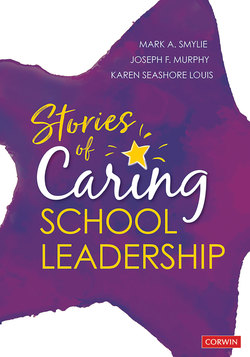Читать книгу Stories of Caring School Leadership - Mark A. Smylie - Страница 24
На сайте Литреса книга снята с продажи.
Influence of Contexts
ОглавлениеSeveral related contexts can affect caring and its outcomes positively or negatively (see Figure 0.3). Noddings observes that caring occurs in and through social relationships that constitute an interpersonal context.16 Most conducive to caring are interpersonal contexts that are enduring; that are personally deep, open, honest, and revealing; that are characterized by trust; and in which attention is given both to the present and how the present relates to the past and the future. In interpersonal contexts that are shorter in duration, are more shallow, are lacking in transparency and honesty, grow from mistrust, or fail to acknowledge the past or consider the future, caring is less likely to form and grow.
16Noddings (2013).
Figure 0.3 Surrounded by Care. Nicholas Fogg, Grade 12
Organizational contexts can also enable or impede caring. Particularly relevant to caring in schools are structures that create opportunities for students, teachers, principals, and other staff to interact and learn about each other; to form long-term, deep, and trusting relationships; and to engage in caring action and interaction. These structures include the ordering of programs, goals, roles, responsibilities, and relationships. They include the organization of time and work, systems of social and academic support, as well as academic press—performance expectations and means of accountability. They also include incentives and rewards that can direct attention and action toward caring.
In addition to structural elements, school organizational climate and culture can affect caring. By climate we refer to the perceptions that students, teachers, and administrators have of each other, of their relationships, and of the school as a place for caring and learning. Particularly important to caring and other supportive behavior is how students and adults perceive the ethical climate of the school. A school’s organizational culture—that is, its system of orientations, taken-for-granted assumptions, and values as well as the symbols, rituals, and routines by which they are communicated—sets expectations for caring and establishes a foundation for mutual accountability in caring. Other aspects of organizational context can be important for caring in schools. Power and authority relationships and processes of school decision-making create conditions that can support or impede caring. How a school balances collective and individual interests and how it engages in competitive and adversarial or consensual and constructive politics can be important to caring. Also relevant is how a school may rely on consolidated or expansive and inclusive distribution of power and influence.
Beyond the school are extraorganizational contexts that can affect systems of caring. These contexts include families, communities, and broad policy and social-historical-cultural environments. Notable are social resources in families and communities and characteristics of the broader environment. Norms and values that emphasize the individual, such as independence, self-sufficiency, competition, and individual success, are less supportive of caring than those that emphasize community, such as interdependence, cooperation, and collective responsibility and accountability. In communities, resources for caring include social-emotional support from peers and from nonparent adults, such as relatives, family friends, and neighbors. Opportunities for caring and support can also come through community organizations and the resources and services they can provide. These include civic organizations, recreational and youth development programs, health care and social support services, religious congregations, businesses, and local government. Economic and political forces, crime and violence, racism and other forms of oppression, and population instability can mitigate these community resources and caring generally.
